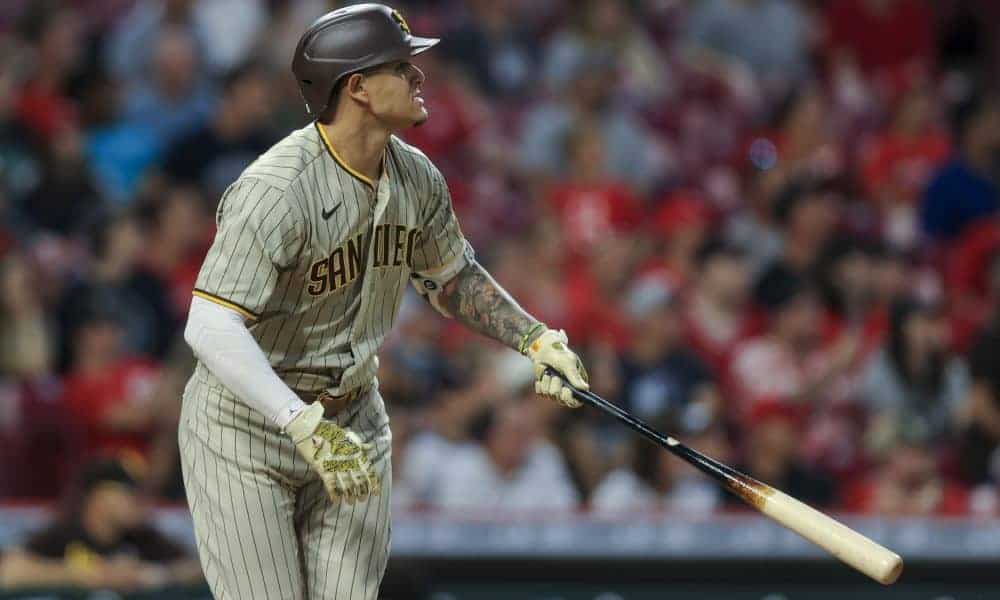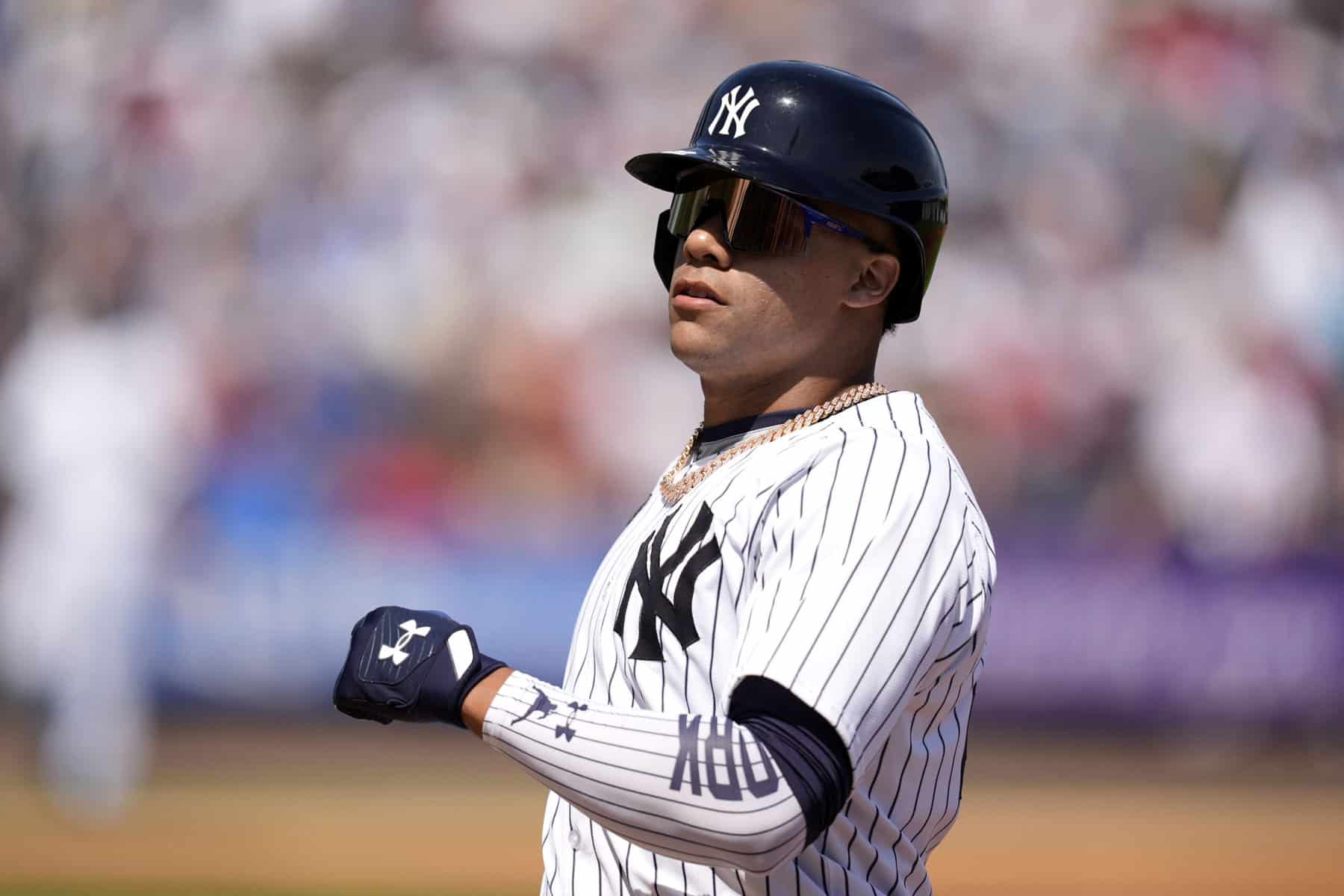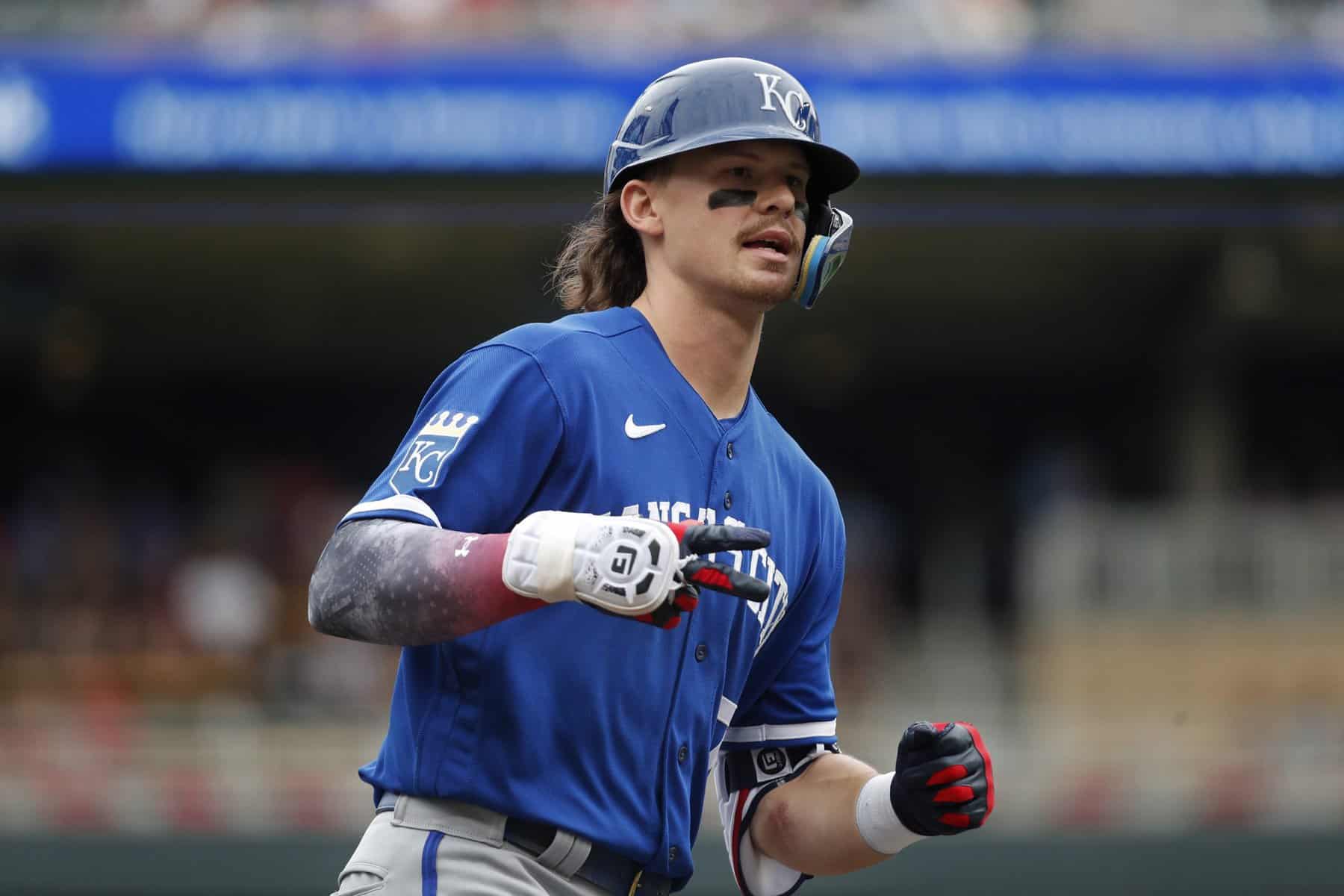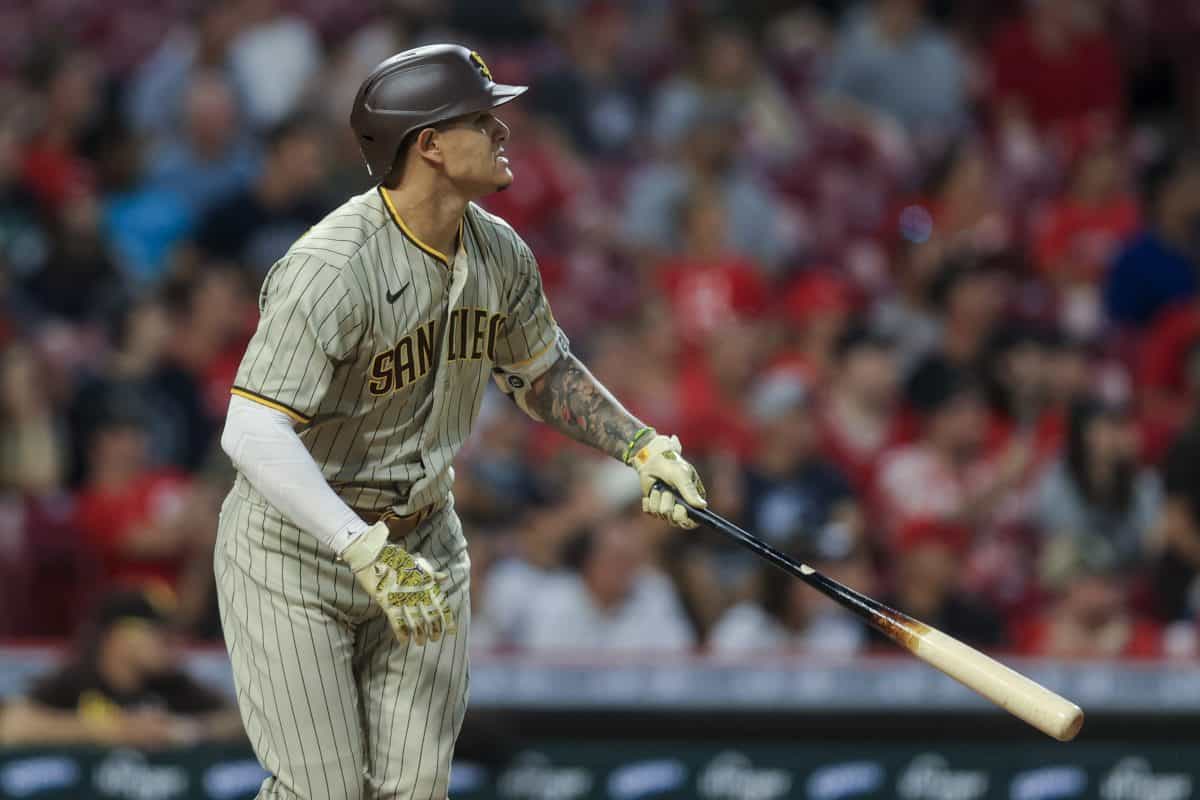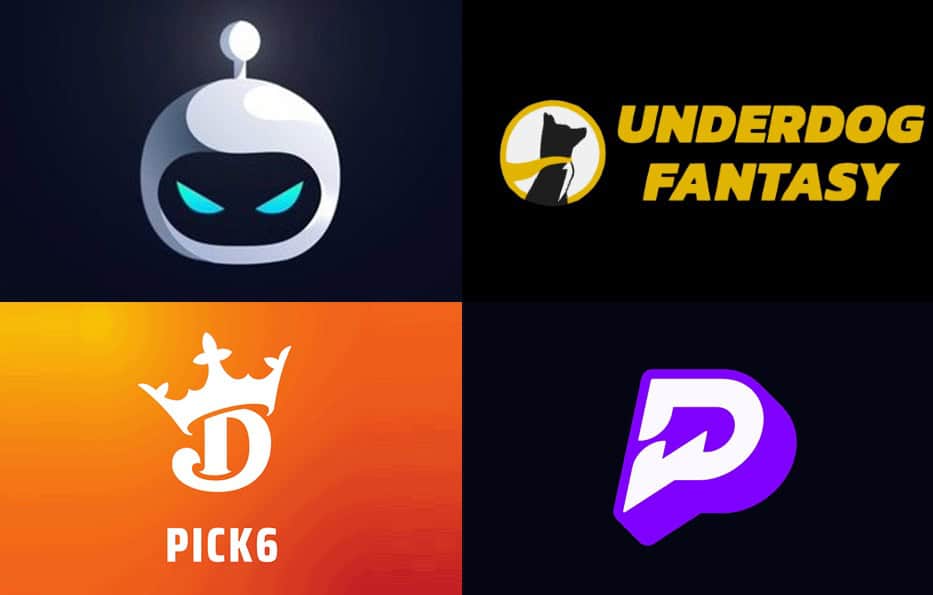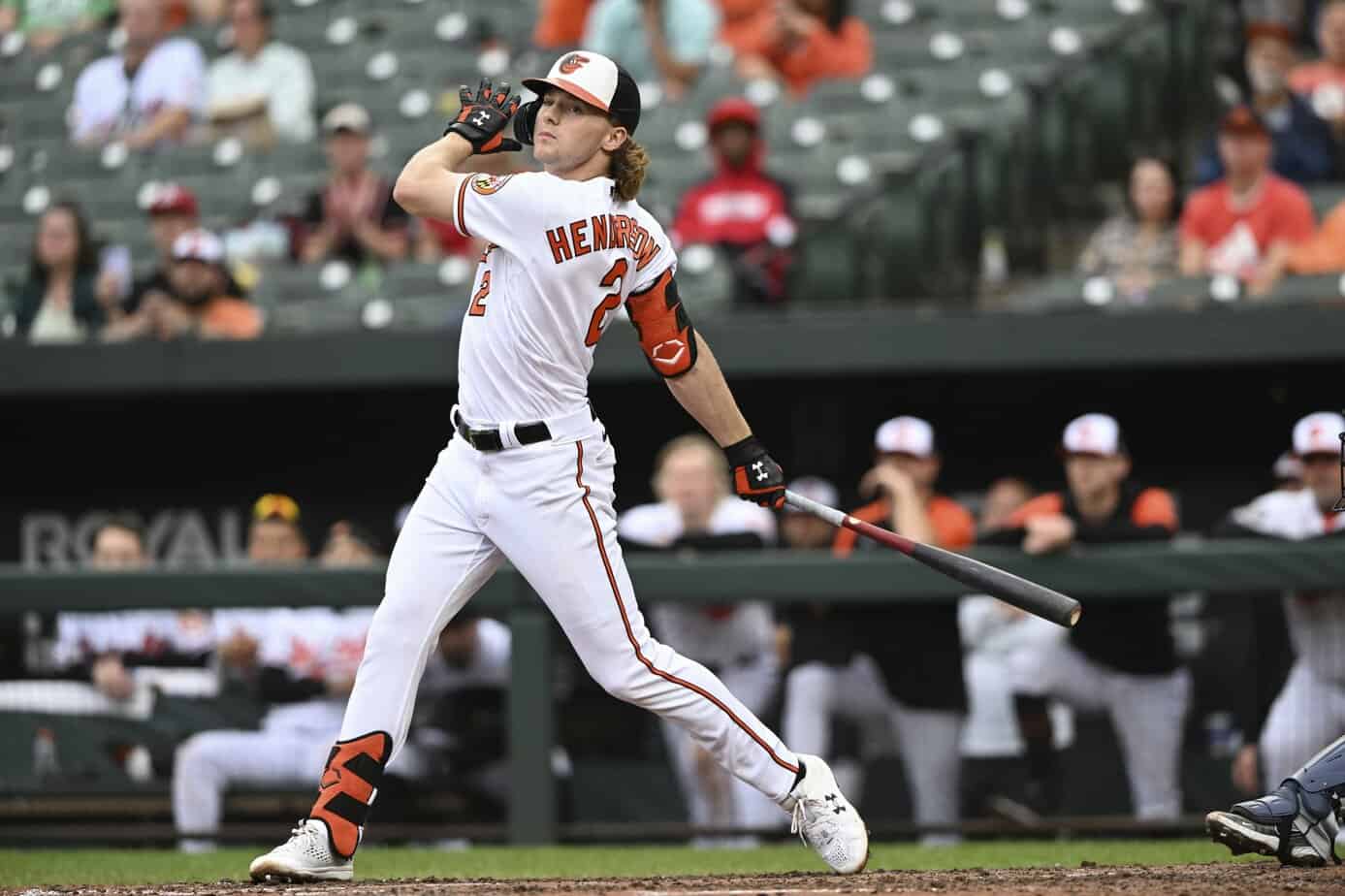Our multi-part guide to playing MLB DFS continues with today’s breakdown of how to make MLB DFS projections. You can find our primary MLB DFS strategy guide here, but I’ve broken down some specific concepts in greater depth as well. While you can always use our MLB DFS projections instead of crafting your own, if you’re interested in doing the work yourself, I’ll break down the key stats to use when projecting players. While these are primarily tips for hand-building MLB DFS lineups, our MLB DFS Sims tool can do the hard work and analysis for you, and I strongly encourage you to check it out. Let’s dive into our tips for making effective MLB DFS projections.
How to Make MLB DFS Projections: Key Stats to Use When Projecting Players
How to Make MLB DFS Projections: Key Stats to Use When Projecting Players
Crafting MLB DFS Projections: Choosing the Right Stats
Baseball has the most stat-obsessed sports culture out of any sport I’ve studied. There are so many resources and advanced stats to choose from that you could easily get overwhelmed by diving too deep into that world. You would be wise to focus on just a few stats to start.
For batters, my favorites include on-base percentage and ISO (isolated power percentage), which help you determine a player’s production at the plate. Batting average is also a hugely underrated stat in fantasy baseball, and while it has a bad rep for not being indicative of overall importance, walks aren’t especially useful in MLB DFS, especially relative to hits.
For pitchers, I’ve found that strikeout rate and WHIP, or walks and hits divided by innings pitched, have the strongest relationship to fantasy performance.
Because there is so much variance in baseball, it’s also important to determine what impact luck may have had on these stats. BABIP for batters and xFIP for pitchers can help you determine what a player’s stats should be versus what they currently are.
Crafting MLB DFS Projections: Necessary Context to Consider
After settling on what stats to incorporate, you’ll want to consider the players’ matchups, park factors, weather and lineup order.
Pitcher & Batter Handedness
For matchups, you’ll want to pay attention to the handedness of both pitchers and batters. Batters have an advantage versus pitchers using the opposite hand, and pitchers have the advantage versus batters of the same hand. Teams will frequently use different lineups versus left-handed pitchers than right-handed pitchers to maximize their production. You should prefer batters with a favorable matchup in this respect, but it’s not as simple as just looking at their stats versus that pitcher type because starters typically only pitch five or six innings.
Some teams also employ “platoons,” which use two players from the opposite side of the plate at the same position. You should watch out for players who meet this description because they are frequently subbed out versus relief pitchers, which makes their production not as good as it might seem at first glance.
Since 2020, relievers must face at least three batters, and this significantly affects the chance of your batters getting pinch hit for. Previously, left-handed relievers were mostly used brought in versus left-handed batters. Lefty batters against left-handed pitchers is historically the worst matchup for a batter, but if a lefty batter is put in between right-handed batters, the incentive to roll out a LHP is negated — especially because the LHB they’re targeting could be platooned.
Now, these lefty pitchers will probably be utilized mostly against star left-handed batters who won’t be subbed out. The net result is that I believe platooning will become less common for left-handed batters. Most relievers are right-handed, so righty bats could still be frequently platooned.
Park Factors & Weather
Park factors are important as well — anyone who has ever watched a Colorado Rockies home game can attest to this fact. The main external factor that affects batter performance is air density. When the air is dense, there is more resistance on the ball, and it doesn’t travel as far. When it’s not, players can generate more hits and more power.
The main factors contributing to air density are temperature and elevation. Both make the air less dense as they are higher. That’s why Coors Field in the “Mile High City” is such a great batter’s park. I didn’t have as much luck when I tried the batting cages there, though, so it won’t turn just anyone into the next Barry Bonds.
While you’re checking the air temperature, make sure to pay attention to reports of precipitation as well. There are several great resources to help you determine the chance of a game’s postponement, but I use radar to make my final decision. If a game looks like it might have more than a couple hours of rain, it’s important to discount your player projections to reflect that.
Sometimes, a game might be likely to start but only have a couple-hour window with good weather. That can really affect the upside of your stacks because high-scoring games take longer to play.
Lineups & Batting Order
The final factor to consider in your projections are lineups and batting orders. Several hours before game time, each team releases their batting order, which tells you exactly who will start the game.
Lineups aren’t just helpful for determining who is playing — they’re also helpful to figure out how many opportunities a player will have. Much like minutes in the NBA, at-bats are critical to accurate baseball projections. Once you know someone’s position in the batting order, at-bats are a lot more predictable than minutes in the NBA, which can be heavily influenced from game to game by coaching decisions.
But not all No. 6 spots in the order are the same. Away teams get more at-bats for the bottom of the order because they get an extra half-inning on average. Plus, in favorable conditions for batting, getting on base is more likely, so there are more at-bats in the game.
Crafting MLB DFS Projections: Concluding Thoughts on Projecting MLB Players
If the idea of developing projections still seems overwhelming, I’d recommend using my MLB DFS projections or our MLB DFS Sims tool to build your lineups. For cash games, you’ll want to focus on getting as many high-value players as possible in your lineup, while spending all of your salary.
For tournaments, it’s important to have a balance of strong value plays/stacks and lower-owned sleepers. But, being able to use a player’s value and their projected ownership to determine the risk and reward of a sleeper pick requires even more accurate projections.

